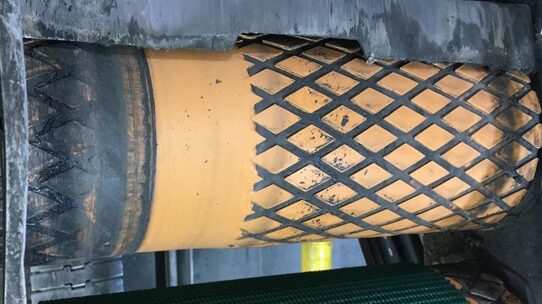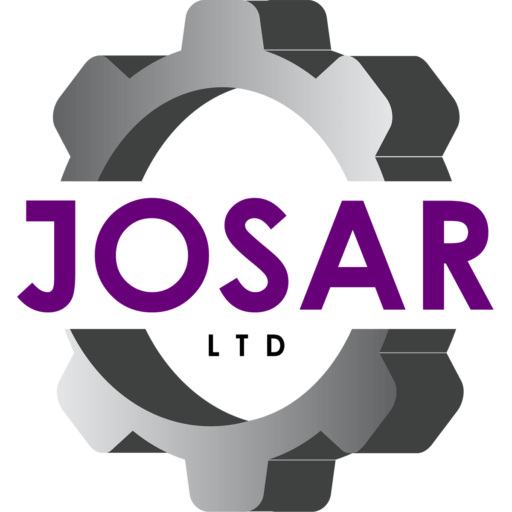For over fifteen years, Josar has visited many customers in both the light and heavy duty industries. Among many of our customers, we have seen that over tensioning of conveyor belts is a recurring issue. Over tensioning in conveyors occur when the tension applied to the conveyor belt exceeds the manufacturers recommended levels. This excessive tension can be due to:
- Improper setup
- Miscalculated adjustments
- Attempts at reducing slippage
While it might seem like a good idea to tighten a belt in order to keep it functioning smoothly, the consequences of this can be detrimental to your bushiness’s performance.
Two common consequences of over-tensioning that Josar has seen in our customers are: belt splice failure for both mechanical and vulcanised splices, and uneven wearing of pulley lagging.
The images below show this:


Additionally, over tensioning of your operation’s conveyor belt can also lead to an array of several other issues that include:
- Excessive Wear and Tear: Increased tension can cause accelerated wear on the belt, reducing its lifespan. The belt may stretch or become permanently damaged, leading to more frequent replacements.
- Damage to Components: High tension can strain and damage conveyor components such as pulleys, bearings, and motors. This can result in equipment failures and increased maintenance costs.
- Belt Slippage: Ironically, over tensioning can sometimes cause the belt to slip more easily because the added tension can deform the belt, reducing the surface area in contact with the pulleys.
- Energy Inefficiency: Excessive tension increases the load on the drive motor, leading to higher energy consumption and reduced efficiency.
- Misalignment: Over-tensioning can cause the belt to run off-centre or become misaligned, leading to further wear and operational issues.
- Safety Hazards: If a conveyor belt is over tensioned, there is a higher risk of it snapping, which can pose significant safety hazards to personnel working near the conveyor system.
In order to avoid over tensioning in your business, it is crucial to follow the manufacturer’s recommended tensions setting.
